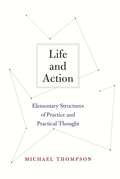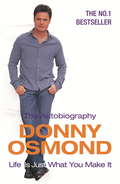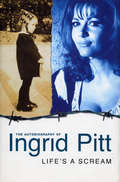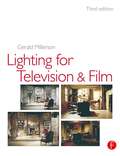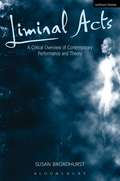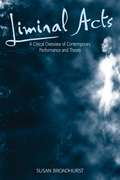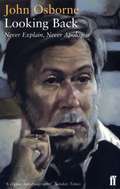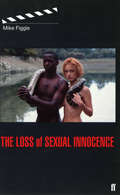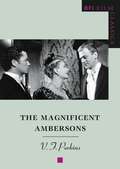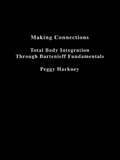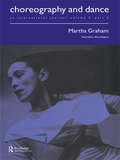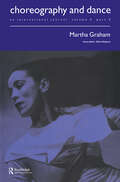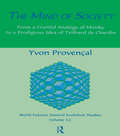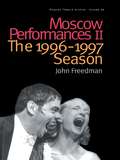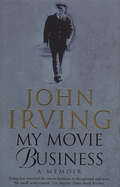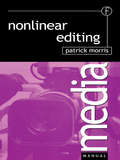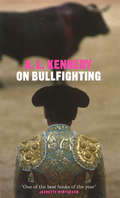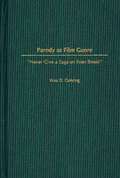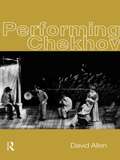- Table View
- List View
Life and Action: Elementary Structures of Practice and Practical Thought
by Michael ThompsonIn a book as entertaining as it is enlightening, Kristin Thompson offers the first in-depth analysis of Hollywood's storytelling techniques and how they are used to make complex, easily comprehensible, entertaining films. She also takes on the myth that modern Hollywood films are based on a narrative system radically different from the one in use during the Golden Age of the studio system. Drawing on a wide range of films from the 1920s to the 1990s--from Keaton's Our Hospitality to Casablanca to Terminator 2--Thompson explains such staples of narrative as the goal-oriented protagonist, the double plot-line, and dialogue hooks. She domonstrates that the "three-act structure," a concept widely used by practitioners and media commentators, fails to explain how Hollywood stories are put together. Thompson then demonstrates in detail how classical narrative techniques work in ten box-office and critical successes made since the New Hollywood began in the 1970s: Tootsie, Back to the Future, The Silence of the Lambs, Groundhog Day, Desperately Seeking Susan, Amadeus, The Hunt for Red October, Parenthood, Alien, and Hannah and Her Sisters. In passing, she suggests reasons for the apparent slump in quality in Hollywood films of the 1990s. The results will be of interest to movie fans, scholars, and film practitioners alike.
Life Is Just What You Make It: The Autobiography
by Donny OsmondThe 1970s heartthrob who remains just as popular as ever finally reveals all in this 'emotionally raw and startlingly candid autobiography'By the time Donny Osmond's first solo single, 'Puppy Love', hit Number One in the summer of 1972, the 14-year-old was already a veteran of TV and Las Vegas. Part of the hitmaking family The Osmonds, and famed for his duets with sister Marie, with whom he went on to make the hugely popular series The Donny & Marie Show, Donny Osmond was THE teen pin-up of the 1970s. But after punk, the clean-cut approach wasn't so popular, and record companies felt that there would be no interest in the grown man.In this revealingly honest memoir, Donny Osmond reveals how he kept faith, how he battled against a debilitating social phobia and made a hugely successful comeback, not just as a recording artist, but also as a star of stage in a record-breaking musical. He continues to tour regularly and remains hugely popular to his fans around the world. This book shows how he kept on going, and will be an inspirational read to all.
Life's A Scream: Autobiography Of Ingrid Pitt
by Ingrid PittAt the age of five, Ingrid Pitt found herself in a concentration camp. Ingrid and her mother escaped from the guards while on a forced march and presented themselves to the partisans, unsure if they would kill them. They spent the rest of the war in the forests. Ingrid fell in love for the first time and watched in despair as British bombers flew overhead. She still cannot see the vapour trials of planes without being transported back to her childhood vigil. After the war Ingrid came to London, where she developed a career as a Hammer House of Horror movie star, but, as she proundly says, `I was always the biter, never the bitten!' She also acted in mainstream films, such as WHERE EAGLES DARE. She had a child by her first marriage and a grand passion which lead to her marrying a racing driver. They lived in Argentina for a while and were good friends of President Peron and Isabelits Peron. Ingrid even spent an evening with the embalmed body of Eva Peron. Written with great passion and warmth, this is a rare childhood memoir and the story of Hammer`s most galmorous actress. Above all, this is a story of a survivor.
Lighting for TV and Film
by Gerald MillersonSkilful lighting involves a subtle blend of systematic mechanics and a sensitive visual imagination. It requires anticipation, perceptiveness, patience and know-how. But learning through practice alone can take a great deal of time. This book is a distillation of many years' experience, with advice and guidance that will bring successful results right from the start. Whether you are a student studying lighting techniques in the television, video and film media, or a professional lighting for the camera, this book will be an invaluable aid. Other members of the production team, including camera crews, designers and directors, will also find the information here interesting and useful.The book concentrates primarily on the fundamental principles of lighting in studios, on location and display, as well as single-camera, small unit production, improvised and economy lighting, and working with limited facilities. Emphasis is also placed on the safety aspects of working with lighting equipment.Lighting for Television and Film reflects the author's considerable experience of lighting techniques in BBC studios, his teaching and consultancy work.Gerald Millerson's analytical writings spring from a lifetime's personal experience in the medium, and from his teaching and engineering background. During his career with the BBC, he was primarily associated with studio operations in the Television Service. His lecturing background included courses in TV production at a number of American universities.His other books for Focal Press are Television Production, TV Scenic Design, Video Production Handbook and, in the Media Manuals series, Effective TV Production, Lighting for Video and Video Camera Techniques.
Lighting for TV and Film (Library Of Communication Techniques Ser.)
by Gerald MillersonSkilful lighting involves a subtle blend of systematic mechanics and a sensitive visual imagination. It requires anticipation, perceptiveness, patience and know-how. But learning through practice alone can take a great deal of time. This book is a distillation of many years' experience, with advice and guidance that will bring successful results right from the start. Whether you are a student studying lighting techniques in the television, video and film media, or a professional lighting for the camera, this book will be an invaluable aid. Other members of the production team, including camera crews, designers and directors, will also find the information here interesting and useful.The book concentrates primarily on the fundamental principles of lighting in studios, on location and display, as well as single-camera, small unit production, improvised and economy lighting, and working with limited facilities. Emphasis is also placed on the safety aspects of working with lighting equipment.Lighting for Television and Film reflects the author's considerable experience of lighting techniques in BBC studios, his teaching and consultancy work.Gerald Millerson's analytical writings spring from a lifetime's personal experience in the medium, and from his teaching and engineering background. During his career with the BBC, he was primarily associated with studio operations in the Television Service. His lecturing background included courses in TV production at a number of American universities.His other books for Focal Press are Television Production, TV Scenic Design, Video Production Handbook and, in the Media Manuals series, Effective TV Production, Lighting for Video and Video Camera Techniques.
Liminal Acts: A Critical Overview of Contemporary Performance and Theory
by Susan BroadhurstThe term liminal refers to a marginalized space of fertile chaos and creative potential where nothing is fixed or certain. Liminal performance is an emerging genre which has surfaced only in recent times and describes a range of interdisciplinary, highly experimental, performative works in theatre and performance, film and music-performances which can be seen to prioritize the body, the technological and the primordial. Broadhurst argues that traditional and contemporary critical and aesthetic theories are ultimately deficient in interpreting liminal performance. This revolutionary work first surveys traditional aesthetics in the writings of Kant, Nietzsche and Heidegger and juxtaposes them with contemporary aesthetics in the writings of Foucault, Derrida, Baudrillard and Lyotard. A series of case studies follows and, Broadhurst concludes with a summary description of liminal performances as an emerging genre. Works discussed in detail include: Pina Bausch's Tanztheater, the innovative Theatre of Images of Robert Wilson and Philip Glass, the controversial social sculptures of the Viennese Actionists, Peter Greenaway's painterly aesthetics, Derek Jarman's queer politics, digitized sampled music, and neo-gothic sound.
Liminal Acts: A Critical Overview of Contemporary Performance and Theory
by Susan BroadhurstThe term liminal refers to a marginalized space of fertile chaos and creative potential where nothing is fixed or certain. Liminal performance is an emerging genre which has surfaced only in recent times and describes a range of interdisciplinary, highly experimental, performative works in theatre and performance, film and music-performances which can be seen to prioritize the body, the technological and the primordial. Broadhurst argues that traditional and contemporary critical and aesthetic theories are ultimately deficient in interpreting liminal performance. This revolutionary work first surveys traditional aesthetics in the writings of Kant, Nietzsche and Heidegger and juxtaposes them with contemporary aesthetics in the writings of Foucault, Derrida, Baudrillard and Lyotard. A series of case studies follows and, Broadhurst concludes with a summary description of liminal performances as an emerging genre. Works discussed in detail include: Pina Bausch's Tanztheater, the innovative Theatre of Images of Robert Wilson and Philip Glass, the controversial social sculptures of the Viennese Actionists, Peter Greenaway's painterly aesthetics, Derek Jarman's queer politics, digitized sampled music, and neo-gothic sound.
Looking Back: Look Back In Anger; Epitaph For George Dillon; The World Of Paul Slickey; Dejavu (Faber Drama Ser. #Vol. 9)
by John OsborneWhen John Osborne died at Christmas 1994, his obituaries cited his autobiographical writings as perfect examples of undiluted talent and acerbic wit. Now, Osborne's superb autobiographies, A Better Class of Person: 1929-1956 and Almost a Gentleman: 1955-1966 (winner of the J. R. Ackerley Prize), are available for the first time in one volume, Looking Back.'A brilliant, funny, melancholy and acrimonious book of memoirs . . . Almost every page confirms that his powers as an elegist, definer of the Zeitgeist and master of unforgiving disgust remain undimmed.' ObserverThis volume also contains 'Bad John', a review by Alan Bennett of A Better Class of Person, and David Hare's eulogy for John Osborne at the memorial service for Osborne in 1995.
Loss of Sexual Innocence (Faber And Faber Screenplays Ser.)
by Mike FiggisMike Figgis's Loss of Sexual Innocence is a fascinating fusion of stories, dreams, images and music. The film is a meditation on the process of growing up, and the inevitable loss of innocence this entails. The central image is the expulsion of Adam and Eve from the Garden of Eden; and as in all of Mike Figgis's work, the focus is upon the passionate and often troublesome nature of relationships between men and women. The film was shot in Italy, Tunisia, and Figgis'snative Newcastle, on the lowest of imaginable budgets. In an introduction to the screenplay, Figgis describes how he brought off this remarkable task.
The Magnificent Ambersons (BFI Film Classics)
by V.F. PerkinsV.F. Perkins explores Orson Welles' genius in directing actors, his intricate weaving of his own narration in and around the drama, and his unsurpassed use of the long take to capture the fines nuance of expression and unspoken feeling. For Perkins The Magnificent Ambersons 'has as many marvellous shots, scenes, ideas, performances as most film-makers could hope to achieve in an entire career'. Second only to Citizen Kane in work, this film can never be seen as he intended it, after being heavily cut by RKO studio. However, it remains a remarkable picture of dynastic ruin and social change.
Making Connections: Total Body Integration Through Bartenieff Fundamentals
by Peggy HackneyHuman movement influences an individual's perceptions and ability to interact with the world. Through exercises, illustrations, and detailed anatomical drawings, this remarkable book guides the reader toward total body integration. An experimental approach to movement fundamentals involving the patterning of connections in the body according to principles of efficient movement, the process of total body integration encourages personal expression and full psychological involvement.
Making Connections: Total Body Integration Through Bartenieff Fundamentals
by Peggy HackneyHuman movement influences an individual's perceptions and ability to interact with the world. Through exercises, illustrations, and detailed anatomical drawings, this remarkable book guides the reader toward total body integration. An experimental approach to movement fundamentals involving the patterning of connections in the body according to principles of efficient movement, the process of total body integration encourages personal expression and full psychological involvement.
Martha Graham: A special issue of the journal Choreography and Dance
by Alice HelpernFirst Published in 1999. Routledge is an imprint of Taylor & Francis, an informa company.
Martha Graham: A special issue of the journal Choreography and Dance
by Alice HelpernFirst Published in 1999. Routledge is an imprint of Taylor & Francis, an informa company.
Mind of Society
by ProvencalFirst Published in 1999. Routledge is an imprint of Taylor & Francis, an informa company.
Mind of Society
by ProvencalFirst Published in 1999. Routledge is an imprint of Taylor & Francis, an informa company.
Moscow Performances II: The 1996-1997 Season
by John FreedmanThis is a collection of John Freedman's reviews and articles, most originally written for the Moscow Times, in which he focuses his expert critical eye on the directors, writers and actors who held centre stage during the 1996-97 theatre season in Moscow. The book looks at the debut of promising new artists and directors at the Moscow Art Theatre celebrating its 100th anniversary this year and offers a wealth of insight into the latest developments in Russian theatre. Freedman illuminates all of the season's noteworthy trends and events in clear, informed and unapologetically opinionated reports. More than just an overview of the stars and highlights, Moscow Performances II observes at close range the playhouses and the people who make up the ever-changing face of contemporary Russian theatre today. This volume is generously illustrated with photographs of featured productions and will be a useful reference for students, professors, writers, directors and actors in the fields of Russian studies, theatre studies, theatre history and contemporary culture.
Moscow Performances II: The 1996-1997 Season
by John FreedmanThis is a collection of John Freedman's reviews and articles, most originally written for the Moscow Times, in which he focuses his expert critical eye on the directors, writers and actors who held centre stage during the 1996-97 theatre season in Moscow. The book looks at the debut of promising new artists and directors at the Moscow Art Theatre celebrating its 100th anniversary this year and offers a wealth of insight into the latest developments in Russian theatre. Freedman illuminates all of the season's noteworthy trends and events in clear, informed and unapologetically opinionated reports. More than just an overview of the stars and highlights, Moscow Performances II observes at close range the playhouses and the people who make up the ever-changing face of contemporary Russian theatre today. This volume is generously illustrated with photographs of featured productions and will be a useful reference for students, professors, writers, directors and actors in the fields of Russian studies, theatre studies, theatre history and contemporary culture.
My Movie Business: A Memoir
by John IrvingJohn Irving's memoir begins with his account of the distinguished career and medical writings of the novelist's grandfather Dr Frederick C. Irving, a renowned obstetrician and gynaecologist, and includes Mr Irving's incisive history of abortion politics in the United States. But My Movie Business focuses primarily on the thirteen years John Irving spent adapting his novel The Cider House Rules for the screen - for four different directors.Mr Irving also writes about the failed effort to make his first novel, Setting Free the Bears, into a movie, about two of the films that were made from his novels (but not from his screenplays), The World According to Garp and The Hotel New Hampshire; about his slow progress at shepherding his screenplay of A Son of the Circus into production.Not least, and in addition to its qualities as a memoir - anecdotal, comic, affectionate and candid - My Movie Business is an insightful essay on the essential differences between writing a novel and writing a screenplay.
Nonlinear Editing (Media Manuals Ser.)
by Patrick MorrisNonlinear is a buzzword for every broadcaster and facility house worldwide. Systems range from the humble to the exotic, and despite the growing acceptance of the technology, many users, both new and experienced, find the complexity of the operation and the time spent loading the material and rendering effects difficult to manage at first. Non-linear editing also comes with its own specialist language, requiring each editor to be conversant with a new range of skills from day one. As desktop systems improve the role of the traditional editor is constantly evolving and expanding. This is an operational manual for professional trainees and students in the post-production industry. It will also serve as a useful reference tool for producers and directors. Written in a concise and clear manner, the book serves as a practical guide to the efficient management and operation of non-linear editing systems. It describes the technology involved, the essential techniques to be mastered including on-line and off-line editing, project management, rendering effects, working with graphics and audio, and adding third party applications. Designed for quick and easy reference, this is a practical user guide to non-linear editing that comes complete with an extensive jargon buster that will get you fully conversant with the technology in a short space of time.Patrick Morris is a Trainer in Post-Production for the Television Corporation of Singapore and the Singapore Broadcasting Authority as well as Chairman of the South East Asia User Group. He is an AVID Certified Trainer with a working knowledge of Lightworks, Media 100, Quantel, D Vision and other systems. Formerly a consultant and Senior Editor for BBC, ITV and SKY TV, he also spent many years a Training Manager for BBC Wood Norton and as Senior Video-Tape Editor for Television South West.
Nonlinear Editing
by Patrick MorrisNonlinear is a buzzword for every broadcaster and facility house worldwide. Systems range from the humble to the exotic, and despite the growing acceptance of the technology, many users, both new and experienced, find the complexity of the operation and the time spent loading the material and rendering effects difficult to manage at first. Non-linear editing also comes with its own specialist language, requiring each editor to be conversant with a new range of skills from day one. As desktop systems improve the role of the traditional editor is constantly evolving and expanding. This is an operational manual for professional trainees and students in the post-production industry. It will also serve as a useful reference tool for producers and directors. Written in a concise and clear manner, the book serves as a practical guide to the efficient management and operation of non-linear editing systems. It describes the technology involved, the essential techniques to be mastered including on-line and off-line editing, project management, rendering effects, working with graphics and audio, and adding third party applications. Designed for quick and easy reference, this is a practical user guide to non-linear editing that comes complete with an extensive jargon buster that will get you fully conversant with the technology in a short space of time.Patrick Morris is a Trainer in Post-Production for the Television Corporation of Singapore and the Singapore Broadcasting Authority as well as Chairman of the South East Asia User Group. He is an AVID Certified Trainer with a working knowledge of Lightworks, Media 100, Quantel, D Vision and other systems. Formerly a consultant and Senior Editor for BBC, ITV and SKY TV, he also spent many years a Training Manager for BBC Wood Norton and as Senior Video-Tape Editor for Television South West.
On Bullfighting (Yellow Jersey Shorts Ser.)
by A. L. KennedyBullfighting - the ultimate spectator sport.Acclaimed novelist A. L. Kennedy unpeels the layers and explains the mechanics before dissecting them with surgical precision. Beyond the theatre, the costume and the well-worn plot she focuses on the fact that a man faces his death while a crowd looks on. The result is a startling confrontation with her own, and mankind's, mortality.
Parody as Film Genre: Never Give a Saga an Even Break (Contributions to the Study of Popular Culture)
by Wes D. GehringParody is the least appreciated of all film comedy genres and receives little serious attention, even among film fans. This study elevates parody to mainstream significance. A historical overview places the genre in context, and a number of basic parody components, which better define the genre and celebrate its value, are examined. Parody is differentiated from satire, and the two parody types, traditional and reaffirmation, are explained. Chapters study the most spoofed genre in American parody history, the Western; pantheon members of American Film Comedy such as The Marx Brothers, W. C. Fields, Mae West, and Laurel and Hardy; pivotal parody artists, Bob Hope and Woody Allen; Mel Brooks, whose name is often synonymous with parody; and finally, parody in the 1990s. Films discussed include Destry Rides Again (1939), The Road to Utopia (1945), My Favorite Brunette (1947), The Paleface (1948), Butch Cassidy and the Sundance Kid (1969), Blazing Saddles (1974), Young Frankenstein (1974), Hot Shots! Part Deux (1993) and Scream (1996).This examination of parody will appeal to scholars and students of American film and film comedy, as well as those interested in the specific comedians discussed and the Western genre. Gehring's work will also find a place in American pop culture studies and sociological studies of the period from the 1920s to the 1990s. The book is carefully documented and includes a selected bibliography and filmography.
Performing Chekhov
by David AllenFirst published in 1999. Routledge is an imprint of Taylor & Francis, an informa company.
Performing Chekhov
by David AllenFirst published in 1999. Routledge is an imprint of Taylor & Francis, an informa company.
